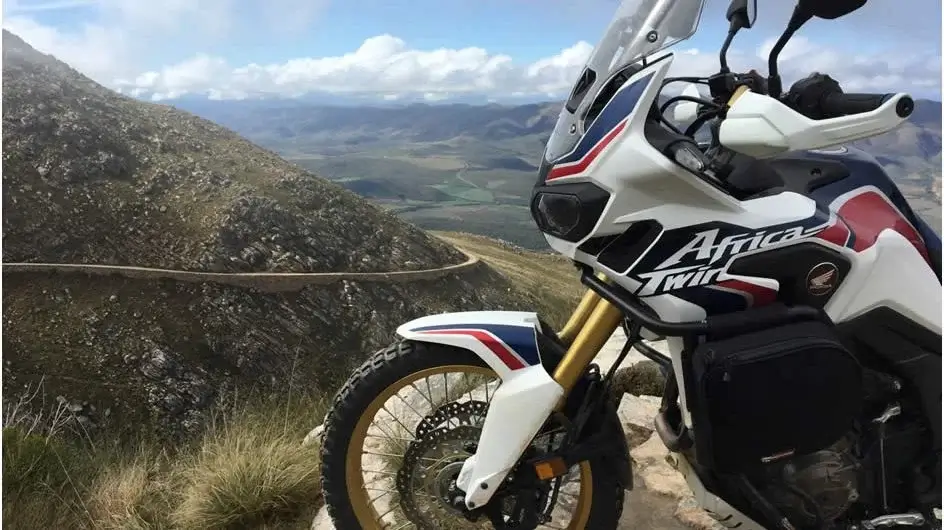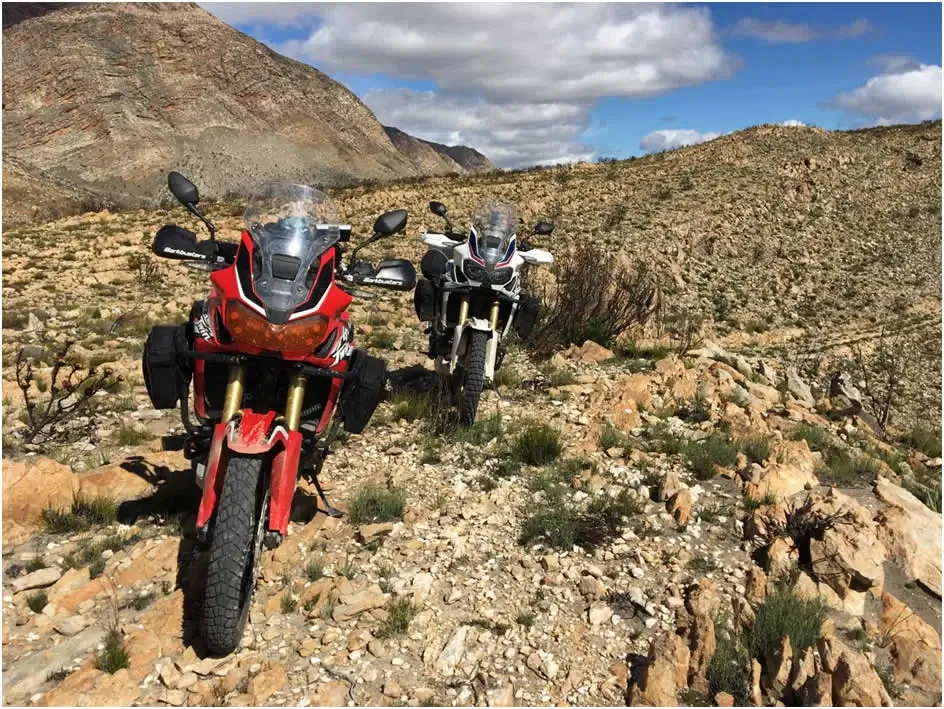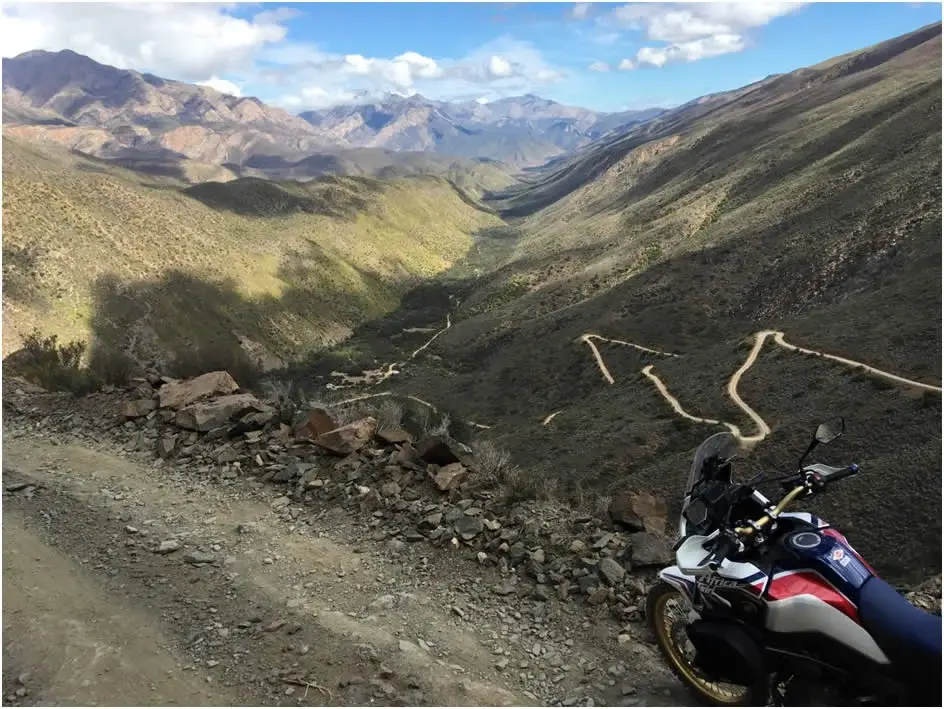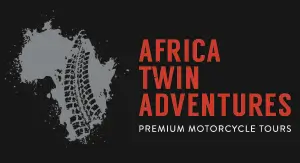
Having really impressed me on asphalt and good dirt roads during my previous review, I thought it time to put the Africa Twin through its paces on some rougher terrain, to see how the motorcycle holds up to a continuous hammering.
Issues that will usually become apparent when working a big adventure motorcycle hard over a long period are suspension fade and brake fade, and fixtures and fittings can also often develop annoying rattles or loosen. To be honest you never really know what might be a problem until you have ridden the bike hard.
The next consideration was where to put the Africa Twin through its paces. Living in the Western Cape we are blessed with some of the best adventure riding terrain in the world, but a road known and loved by probably every adventure rider in South Africa is the one into “The Hell”. This stretch of road is 50km (31 miles) long, and while having stunning scenery, it can be a bike breaker if ridden fast. While twisting through the valley, there is a good variety of fast and slower sections, with the suspension and brakes being tested over fast whoops and rutted and rocky sections.
It did not take much convincing to get Brian Ellis to accompany me on the ride, and just out of Cape Town we were on the gravel roads and heading for the Swartberg Pass and “The Hell”
Besides fitting crash-bars, both Africa Twin were shod with slightly more aggressive tyres, one with Pirelli Scorpions front and rear, and the other with Continental TKC 80 front and Pirelli Scorpion rear. While the Scorpions are limited when it comes to very sandy or muddy conditions, over the years we have found these to be the best in terms of traction and wear on big adventure bikes when riding hard pack and shale. Tyre choice is always down to personal preference, but we decided on this combination as we have both used these tyres on this route before. Both motorcycles were loaded with about 25kg (55 pounds) of luggage, and suspension settings on standard factory. Suspension settings are another subjective issue, but I personally prefer soft suspension, as I find this more comfortable and less tiring on longer rides.
The other change to both motorcycles was the fitment of wider aftermarket foot pegs, as the standard pegs are on the small side if you intend standing for long periods.
Both motorcycles were the traction control and ABS models, and while both these features undoubtedly work very well, again it is a matter of personal preference when deciding on your settings. Brian had a small amount of traction control dialled in, and no rear ABS (the front does not switch off), while I left the ABS on, and had the traction control off.
As mentioned, the scenery on this route is stunning, so it wasn’t long before we stopped to take a few pictures, and like any true bikers, this had to include the motorcycles. A rutted single track up onto a rocky outcrop seemed like the perfect spot, and while we were both a bit nervous about dropping the bikes, we needn’t have been. With traction control on or off, the bikes climbed the hill with ease, and bouncing over rocks in first gear was a breeze, as getting your feet on the ground if you happen to stall the motor is made easy with the low seat height. While this may not seem like a big deal, who can honestly say they haven’t been embarrassed by stalling at low speed and then dropping their motorcycle?

Photoshoot done, and time to see whether the whoop section will bottom out the suspension. It’s always fun getting air on an adventure motorcycle, but sometimes the landing can be less than fun. The first few jumps were used as testers, but we held nothing back over the last ones. Neither of us felt the suspension bottom out, but we definitely used all the travel available.
Most of our time was spent riding next to each other, and while this is definitely more fun, on a narrow road like this, it can be difficult to avoid the odd exposed rock, sometimes resulting in a nasty impact through the front end. No problems here either, with the suspension soaking up all we could throw at it.
Half way through the pass Brian dropped back a bit, and with the whole road to myself, I decided to see how aggressively the bike could be ridden and how the ABS would affect the handling. I had tested the ABS previously in a straight line, but the reality is that sometimes if you overcook a corner you do need to touch the brakes when you don’t really want to. I managed to outbreak myself into two corners, and while I could feel the ABS working, it was not intrusive, and didn’t upset the motorcycle at all. After approximately 20km (12 miles) of pushing my limits, the brakes and suspension held up perfectly.

After photographs at the top of the descent to The Hell, we made our way down to a couple of very welcome ice cold beers and chatted about the ride. Besides all the technical aspects of the motorcycles and how well they handled the terrain, the overriding impression for both of us was that compared to other motorcycles we had ridden on the route, the Africa Twin required less effort, and neither of us felt exhausted. I would put this down to the fact that the ergonomics of the motorcycle are great, as well as the smoothness and usability of the power and brakes.
The ride out of The Hell to our overnight spot in Prince Albert only confirmed our impressions, and we arrived there having covered 650 km (403 miles) over some reasonably testing terrain still feeling fresh.
The following day we both needed to be back in Cape Town, and decided on the shortest fastest route home. The ability to cover big distances easily is very important on an adventure motorcycle, and wind protection plays an important role here. While at first glance the Africa Twin screen seems on the small side, the design that allows some air flow below the screen eliminates buffeting, making hitting long paved sections a pleasure.
Back home safely with the bikes washed and parked in the garage we both agreed it had been a great trip and that the Africa Twins performed faultlessly.

